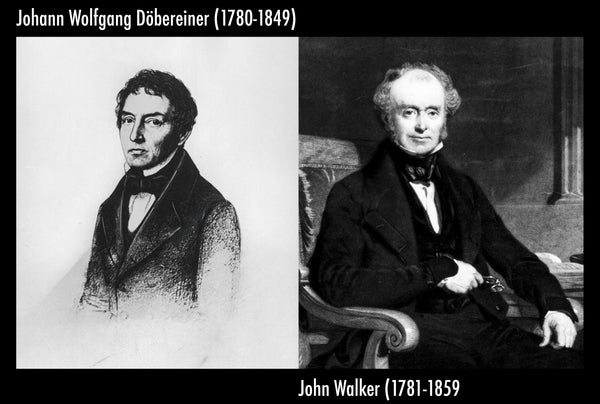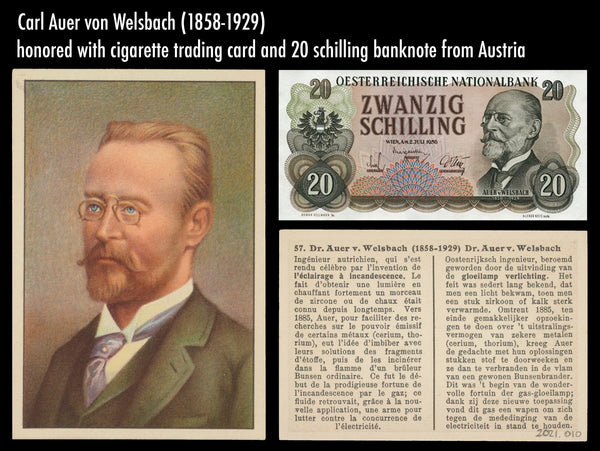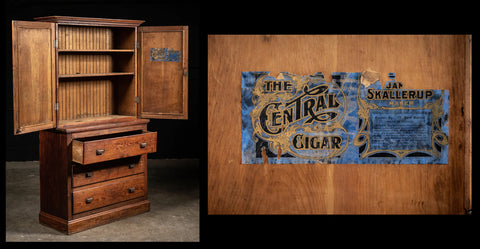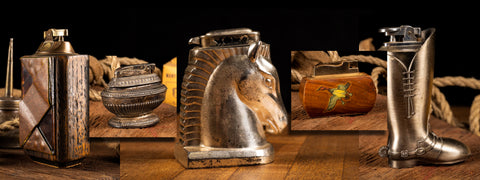In the 300,000+ years of human existence, one constant has remained: We need fire. From ancient animal sacrifices to today’s backyard barbecues, the story of fire incorporates our spiritual and physical necessity as well as pleasures and luxuries. It’s with mechanized lighters that we see the most ingenuity, invention, and evolution. Which do you think came first, lighters or matches?
THE 19th CENTURY FLAMES ON
Tobacco was being exported and enjoyed by free persons around the world since the 17th century, and the need for a more convenient and portable fire source had been growing. Fires were mostly still started using steel struck against flint (or quartz) to create sparks for a fire, and splinters tipped with a combustable chemical - usually sulfur as the Chinese had been doing since at least the 500s AD - would carry that fire to candles, tobacco pipes, etc.
The first self-starting fire making stick was introduced in 1805 by Jean Chancel. The head of the match was made from mixture of potassium chlorate, sulfur, sugar, and rubber and was lit by dipping it into small asbestos bottle filled with sulfuric acid. This would be the first self-starting match stick. There are some health concerns, of course, but the idea of creating fire from purely chemical means started an interesting trend. In 1823, a German chemist named Johann Wolfgang Döbereiner invented the first practical table lighter called "Döbereiner's Lamp,” also using sulfuric acid. For a while, the Döbereiner's Lamp was all the rage, selling over a million lighters until 1930.
On April 7, 1827, 5 years after Döbereiner’s marvel, an English chemist and apothecary named John Walker started recording sales for Walker’s “Friction Lights” - splinters of wood coated with a potassium chloride–antimony sulfide paste. Unlike previous attempts using chemical-heat, “Friction Lights" ignited when rubbed against sand paper. Friction matches were a game-changer for smokers and campers, being both portable and easy to use.
Trivia: In 1902, Pabst Brewing Company in Milwaukee became the first company to invest in branded match books.
After the 1850s, there were considerable changes to how people thought of fire making. This previous blog post takes a look at the 1850s and Alex Soyer’s Magic stove that used alcohol spirits to create instant heat. This eventually lead to kerosene lamps and stoves, still in use today.
THE MODERN LIGHT OF THE 20th CENTURY
In 1904, Carl Auer von Welsbach from Austria patented ferrocerium (sometimes misidentified as “flint”), a synthetic alloy that produces a very hot bright spark when struck. Von Welbach’s artificial sparkler was small, lightweight, and could fit in the pocket - and again smokers and campers rejoiced.
Just a few years later in 1907, Julius Meister founded the Austrian button and hardware factory Julius Meister & Co. (known as “IMCO”). After World War 1 ended in 1918, IMCO expanded to making pocket lighters using petrol as fuel. It was this IMCO invention that’d inspire George Grant Blaisdell to create the Zippo company (est. 1932, Bradford, Pennsylvania) and it’s iconic presence in American Military history throughout World War 2, Vietnam war, and in Hollywood from James Bond to John McClane.
If you’re a fan of Golden Era Hollywood films, you’re quite familiar with the wide range of table lighters. One of the most epochal is the 1930s Ronson “Touch Tip” found on the desk of Sam Spade, played by Humphrey Bogart in The Maltese Falcon.
Ronson was originally The Art Metal Works (est. 1897, Newark, New Jersey) manufacturing metal novelties like lamps, ink wells, statuettes, etc. After 1913, they ventured into table lighters marketed under the name “Ronson". You can find an explanation of how the “Touch Tip” works here. Ronson also created the "Banjo", the first automatic lighter in 1926 that flames when the button is pressed, and is extinguished when the button is released.
Our modern era of disposable lighters came in 1961 when S. T. Dupont created Cricket butane lighters in France. Gillette (est. 1901, Boston, Massachusetts) bought into the company and started marketing Crickets in the United States in 1972. That same year, the French company, Société Bic S.A. (est. 1953, Clichy, France), known more commonly as BiC, created their own disposable lighter. BiC had already revolutionized the world with BiC Cristal, the most popular pen in the world. BiC entered the disposable razor game in 1974 to compete with Gillette. They did fine.
HOW TO REFILL A VINTAGE LIGHTER
First let’s separate the different kinds of lighters. In the 1950s, a market shift moved naphtha lighter fluid to butane as a primary fuel. Did you know that with new butane lighters, you have to bleed out the air? The Bearded Cigarest on YouTube has a short, succinct video on how to fill your late 20th century to today’s modern butane lighters properly.
EMAIL SUBSCRIBERS - USE F3KR AT CHECKOUT FOR 20% OFF THIS WEEKS PRODUCTS.
For Zippo lighters that use fluid and cotton, Zippo has a pretty well executed video on their YouTube channel. If you have a vintage pocket lighter before 1950, chances are it will use a combo of cotton and lighter fluid, so the Zippo video will help with that as well. Dependable Flame shows you an in-depth workings of wick, wadding, and flint.
Vintage table lighters are simple. You'll need:
- A vintage lighter in established working condition
- Appropriate fuel for the specific lighter - generally naphtha lighter fluid although there are alternatives like mineral spirits - use at your own risk
- A well-ventilated area to work
- Paper towels under your lighter to catch drips
- A fire extinguisher and/or bucket of sand… but not water. Whereas lighter fluid, mineral spirits, alcohol, etc. are all flammable, but aren’t combustable. Trying to put a spill fire out with water will just spread the burning liquid around.
- Safety First: Make sure your well-ventilated area is away from open flames or heat sources. Double check any seals or screw caps for leaks. Lighter fluid evaporates even when not in use, so make sure all areas of air exposure are sealed.
- Wick and Flint: Before adding any fuel, double check your flint, usually held by the spring that pushes it against the wheel , and make sure your wick isn’t old and dried out. Dependable Flame can help out here too.
- Access the Fuel Chamber: Most of the table vintage lighters come with a screw for easy access to the fluid chamber.
- Fill the Chamber: Carefully add the appropriate fuel into the fuel chamber. Use a funnel or a syringe if necessary to prevent spillage. Do not top off - leave some air space.
- Seal the Chamber: Close the fuel chamber securely, making sure it's tightly sealed. Cross-threading or over-tightening can damage the lighter.
- Patience: Allow a few seconds for the fuel to soak.
- Enjoy: Extinguish the lighter when finished. They aren't meant to burn for any extended length of time. Remember to close any tops or covers to prevent fuel evaporation. And, like your room, it periodically needs to be cleaned to ensure proper function.












Leave a comment